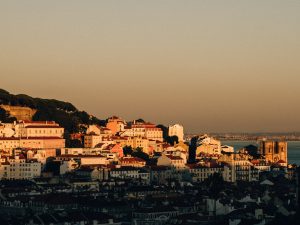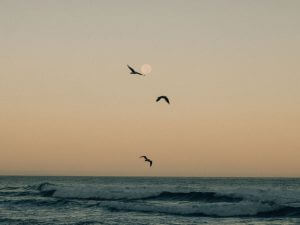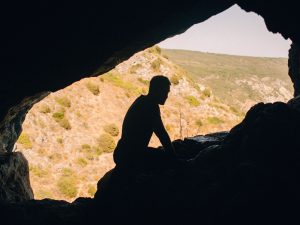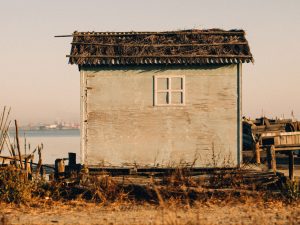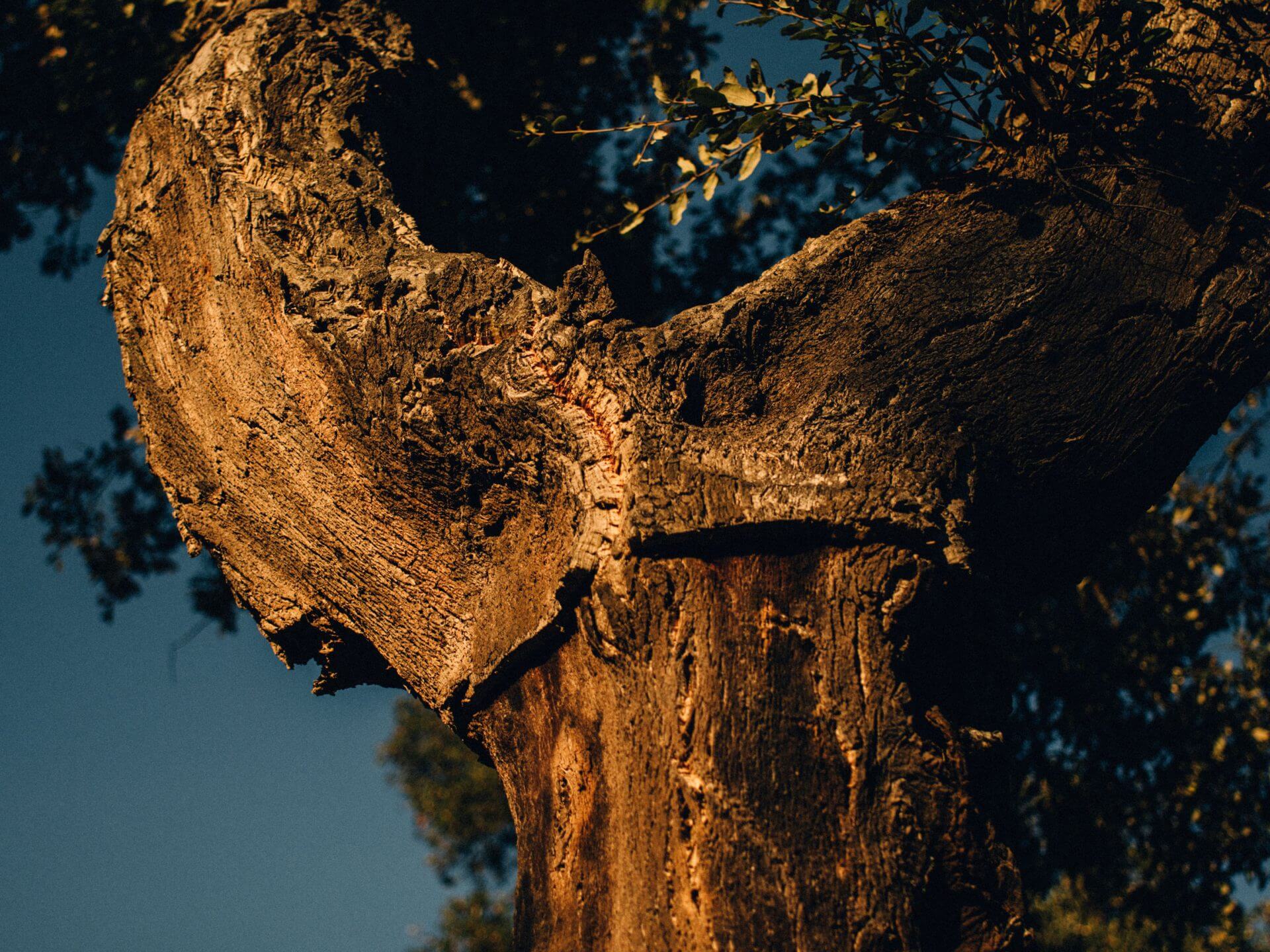
The Cork Forests of Alentejo
ch. VThe Cork Forests of Alentejo
Serra de Grandola
ch. V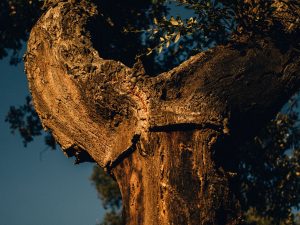 >
>
We turn down a dirt road and arrive in the golden hour of early evening to a place that’s impossible not to describe as magical. It’s an old cork farm in the highlands of Serra de Grandola, with views over Alentejo all the way out to the Atlantic Ocean. As far as the eye can see, the rolling landscape is covered in cork oaks—handsome, twisting evergreens covered in silvery lichen that have been widely cultivated for centuries for their thick, spongy bark.
“It’s an art, to understand the trees,” said André Pereira, a 35-year-old cork extractor, or tirador as they are called here, whose family has been cultivating and harvesting cork trees in the area for countless generations. Cork extraction is grueling, manual labor, requiring 12-hour days during the season of extraction, from May to August. Yet it’s a labor of love to care for the trees, said André, adding that each tree has its own personality, its own spirit.
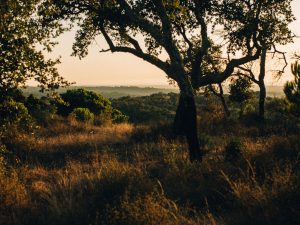
“It's an intimate relationship,” said André. “You have to love the tree as a member of your own family, because if I cut her skin, it can be her death.”
The tiradores strip the outer layer of bark with razor-sharp, short-handled axes, leaving the trees with bare, reddish trunks. If the work is done properly, the bark grows back to be shorn again in 10 years. White numbers are painted on the trees as reminders of when their bark was last extracted.
One of the most biodiverse in the world, the cork oak ecosystem nurtures thousands of plant species, including rare orchids, microflora and exotic birds like griffon vultures and hoopoes in a hot, dry climate that would otherwise produce only desert. Yet as global temperatures rise, said André, the trees are not thriving as they once did.
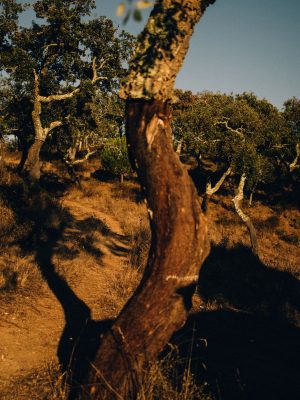
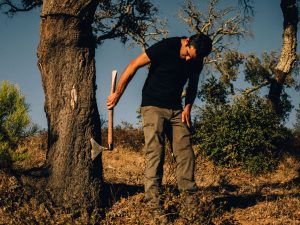
“With climate change, they're dying faster and they're getting more diseases,” he said. “It's like with our body: when you're not healthy, you get diseases. So it's easier for the trees nowadays to get sick." In recent years, fungal pests and soil erosion have increased, as have desertification and forest fires.
“It makes me very, very sad, very, very angry. Ten years ago, cork extraction was much quicker and gave so much more,” said André. “Ten years ago, you could feel the trees differently.”
Yet in recent years, environmentalists are increasingly looking to Alentejo’s cork trees not merely as a victim of climate change but as a potential solution. When well-managed, cork forests increase biodiversity, improve soil composition and regulate the hydrological cycle, helping to prevent forest fires. Portugal’s national School of Agronomy estimates that cork forests can fixate around 6 tons of carbon dioxide per hectare, which in Portugal translates to over 4 million hectares per year. For this reason, the cork tree was designated a “priority species” in the fight against climate change by the World Wildlife Fund (WWF), which is working together with its Portuguese counterpart to conserve the cork forests of Alentejo through its Green Heart of Cork project.
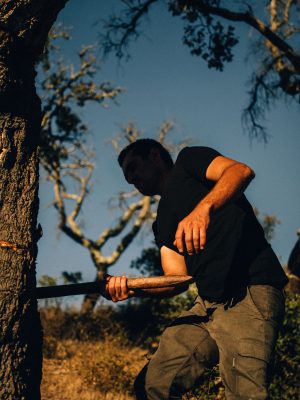
Portugal’s public and private sector are simultaneously working to develop new applications for cork, which offers an eco-friendly biodegradable alternative to less sustainable materials like plastic, leather and aluminum. At Portugal’s University of Aveiro, researcher Rui Novais and his team are working on an ecologically friendly cement and renewable fuels produced from cork-based ceramics.
“We have been focusing on materials in the context of the circular economy,” Novais told the Equal Times in March of 2020. “There has to be a paradigm shift. Cork is extracted every 10 years through a natural process. The tree is not damaged, and its ability to absorb CO2 makes it doubly advantageous.” The cork industry also provides decently paid, green, skilled jobs for some 13,000 workers in Portugal, including the tiradores like André, who extract the bark like their fathers and grandfathers did before them.
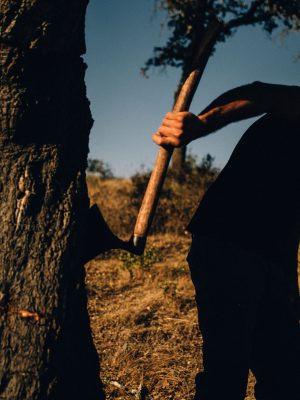
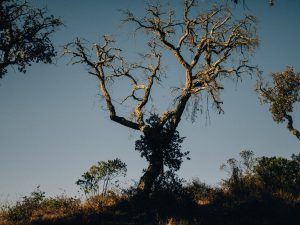
“It’s a love you are born into,” said André. “There are some who extract the cork and don’t love the trees. But most of the tiradores I know, my family and the people around us, we all have this love inside of us.”
The sun set over the Serra de Grândola in soft crests of magenta and tangerine, fading to a warm, dark Alentejo night. We said goodbye to André and headed out, passing darkened farmsteads, empty, wave-battered beaches and the hilltop castles of a hundred medieval villages. Back to the city, to the airport, to another world we traveled, Portugal already retreating into the realm of memory and dreams.
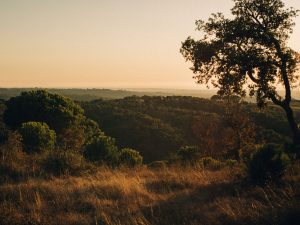

The Cork Forests of Alentejo
Serra de Grandola ch. VWe turn down a dirt road and arrive in the golden hour of early evening to a place that’s impossible not to describe as magical. It’s an old cork farm in the highlands of Serra de Grandola, with views over Alentejo all the way out to the Atlantic Ocean. As far as the eye can see, the rolling landscape is covered in cork oaks—handsome, twisting evergreens covered in silvery lichen that have been widely cultivated for centuries for their thick, spongy bark.
“It’s an art, to understand the trees,” said André Pereira, a 35-year-old cork extractor, or tirador as they are called here, whose family has been cultivating and harvesting cork trees in the area for countless generations. Cork extraction is grueling, manual labor, requiring 12-hour days during the season of extraction, from May to August. Yet it’s a labor of love to care for the trees, said André, adding that each tree has its own personality, its own spirit.

“It's an intimate relationship,” said André. “You have to love the tree as a member of your own family, because if I cut her skin, it can be her death.”
The tiradores strip the outer layer of bark with razor-sharp, short-handled axes, leaving the trees with bare, reddish trunks. If the work is done properly, the bark grows back to be shorn again in 10 years. White numbers are painted on the trees as reminders of when their bark was last extracted.
One of the most biodiverse in the world, the cork oak ecosystem nurtures thousands of plant species, including rare orchids, microflora and exotic birds like griffon vultures and hoopoes in a hot, dry climate that would otherwise produce only desert. Yet as global temperatures rise, said André, the trees are not thriving as they once did.


“With climate change, they're dying faster and they're getting more diseases,” he said. “It's like with our body: when you're not healthy, you get diseases. So it's easier for the trees nowadays to get sick." In recent years, fungal pests and soil erosion have increased, as have desertification and forest fires.
“It makes me very, very sad, very, very angry. Ten years ago, cork extraction was much quicker and gave so much more,” said André. “Ten years ago, you could feel the trees differently.”
Yet in recent years, environmentalists are increasingly looking to Alentejo’s cork trees not merely as a victim of climate change but as a potential solution. When well-managed, cork forests increase biodiversity, improve soil composition and regulate the hydrological cycle, helping to prevent forest fires. Portugal’s national School of Agronomy estimates that cork forests can fixate around 6 tons of carbon dioxide per hectare, which in Portugal translates to over 4 million hectares per year. For this reason, the cork tree was designated a “priority species” in the fight against climate change by the World Wildlife Fund (WWF), which is working together with its Portuguese counterpart to conserve the cork forests of Alentejo through its Green Heart of Cork project.

Portugal’s public and private sector are simultaneously working to develop new applications for cork, which offers an eco-friendly biodegradable alternative to less sustainable materials like plastic, leather and aluminum. At Portugal’s University of Aveiro, researcher Rui Novais and his team are working on an ecologically friendly cement and renewable fuels produced from cork-based ceramics.
“We have been focusing on materials in the context of the circular economy,” Novais told the Equal Times in March of 2020. “There has to be a paradigm shift. Cork is extracted every 10 years through a natural process. The tree is not damaged, and its ability to absorb CO2 makes it doubly advantageous.” The cork industry also provides decently paid, green, skilled jobs for some 13,000 workers in Portugal, including the tiradores like André, who extract the bark like their fathers and grandfathers did before them.


“It’s a love you are born into,” said André. “There are some who extract the cork and don’t love the trees. But most of the tiradores I know, my family and the people around us, we all have this love inside of us.”
The sun set over the Serra de Grândola in soft crests of magenta and tangerine, fading to a warm, dark Alentejo night. We said goodbye to André and headed out, passing darkened farmsteads, empty, wave-battered beaches and the hilltop castles of a hundred medieval villages. Back to the city, to the airport, to another world we traveled, Portugal already retreating into the realm of memory and dreams.

10317 Berlin, Germany
1100-383 Lisbon, Portugal
